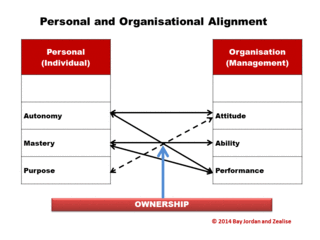It goes without saying that nobody wishes to do a bad job. Yet employee engagement surveys continue to show low levels of employee engagement with little or no sign of improvement despite all the efforts to remedy the problem.
And it is a problem because it is equally self-evident that disengaged people are very unlikely to be performing at or near their full potential. In more business-like terms this means that they are not as productive as they could/should be. Yet the fact nobody wants to do a bad job would suggest that there are other things that are preventing them from doing a better job. Is it possible that this due more to the way you manage your people than anything else?
Of course you will demur. After all you also just want people to do a good job. From your perspective that means just three things. You want:-
- The right attitude;
- The ability to do what is required effectively;
- Performance that combines both these.
If you want a good job done and your people want to do a good job this means you need to see how your wants compare to their wants. Unsurprisingly the two are not so very far apart. Research summarised by Dan Pink in his book “Drive” identifies your people’s wants as:
- Autonomy;
- Mastery;
- Purpose.
When you juxtapose the two sets of wants you can see that there is more than a little overlap. As you would expect the chart below depicts the mutual dependency of the relationship by means of bi-directional arrows with autonomy shaping both attitude and performance. Mastery, on the other hand, could be said to be virtually synonymous with ability and so shapes both ability and performance. The weakest link is perhaps the one between purpose and attitude and is accordingly shown with a broken arrow.
To all intents and purposes you could say that a sense of purpose not only determines a person’s level of engagement but is virtually synonymous with it. Accordingly it seems that to create greater engagement you need to bring your people into greater alignment with the organisation. This is best done through employee ownership which ago a long way towards aligning the person’s objectives with those of the organisation and creates a mutual self-interest that engenders organisational alignment. This is illustrated below.
Employee ownership strengthens an employee's sense of purpose and thereby changes their attitude, but it also helps break the tradition of looking at people purely as a cost and so reinforces the sense of autonomy that builds a virtuous cycle that perpetuates and solidifies the organisational alignment and hence the organisational integrity. Why would you not want to consider this – especially when you can do it at virtually no cost to either individual or organisation? It offers a better employee engagement remedy than anything else in the market.

